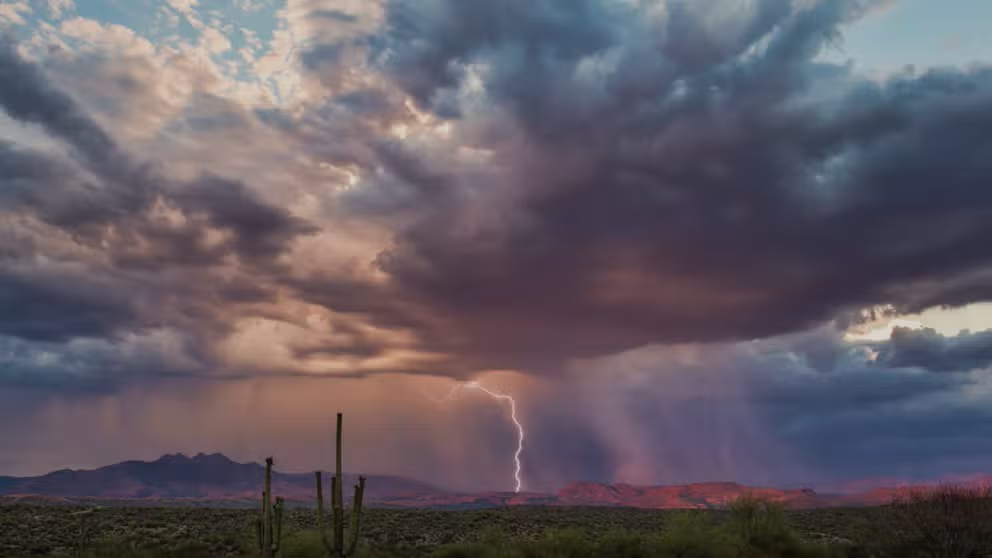7 facts about monsoon season
A summertime rite of the Desert Southwest are the storms that come with what they call the “monsoon season.” Here are 7 facts about the annual weather pattern:
7 facts about monsoon season
Here are 7 facts about Monsoon season.
A summertime rite of the Desert Southwest is the storms that come with what they call the "monsoon season." Here are 7 facts about the annual weather pattern:
1. What is a monsoon?
Monsoon is when the strongest winds at a particular location change direction and blow from a cold region to a hot region. The North American monsoon is caused by the Gulf of California and the Gulf of Mexico blowing warm, moist air towards the southwestern portion of the United States. The North American monsoon brings moisture to typically dry areas of the United States.
2. When is monsoon season?
Monsoon season in North America is considered throughout the summer months, more specifically, from mid-June to the end of September.
3. What parts of North America are impacted by the monsoon season?
The southwestern portion of the United States is most affected by the monsoon season. This includes Arizona, New Mexico, Nevada, and the southern parts of Utah and California. Aside from the United States, this monsoon season also impacts parts of western Mexico.
4. How are monsoons useful?
Monsoons are very important to particular regions because they help traditionally dry areas get moisture through a lot of rainfall. Places with droughts rely upon monsoons to benefit their agriculture, replenish water supplies and keep their local economy flourishing.
5. What percentage of North America’s annual rainfall does the monsoon season bring?
According to NOAA, the North American monsoon season brings 40-50% of the area's total rainfall for the year. The annual precipitation is even high in New Mexico, with the season bringing about 50-60% of the state’s annual rainfall.
6. How much rainfall in inches does the monsoon season bring to North America?
The average amount of rainfall in inches monsoon season brought from 1950-2017 was 4.82 inches. However, some years do see extremes. Some years may have as little as 2.5 inches, and some can have as high as 8 inches of rainfall. The 2021 season was among the wettest in the past several years.
7. How does monsoon season impact wildfire season?
The most intense point of wildfire season in the southwestern portion of the United States is at the end of June. This is also when monsoon season is just starting. The monsoons are not bringing much moisture yet, and the dry lightning from them can help escalate wildfires, making this time particularly dry and threatening to the area. However, after about a week or two, the moist air starts moving to the area and heavily decreases the risk of a fire breaking out.
